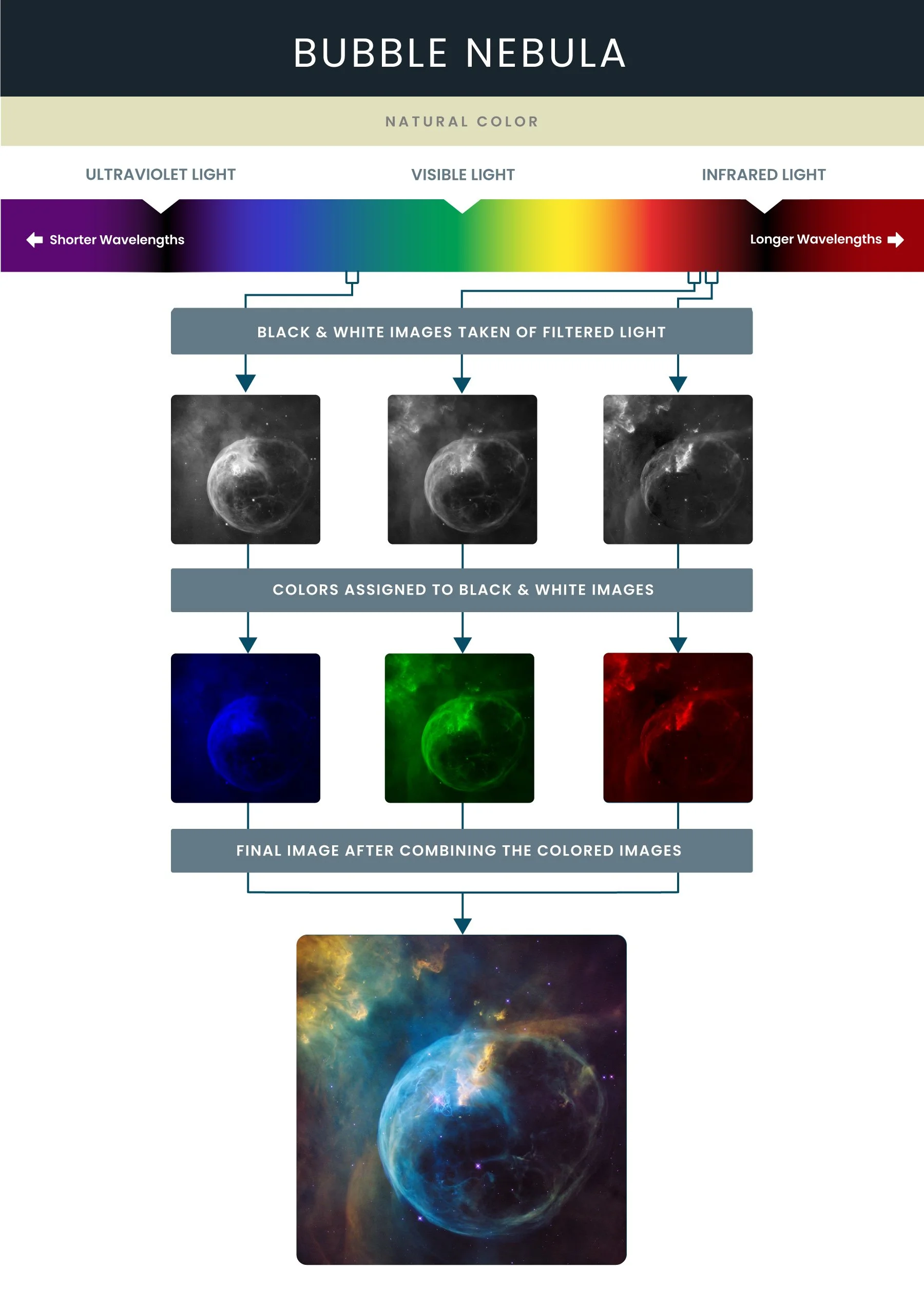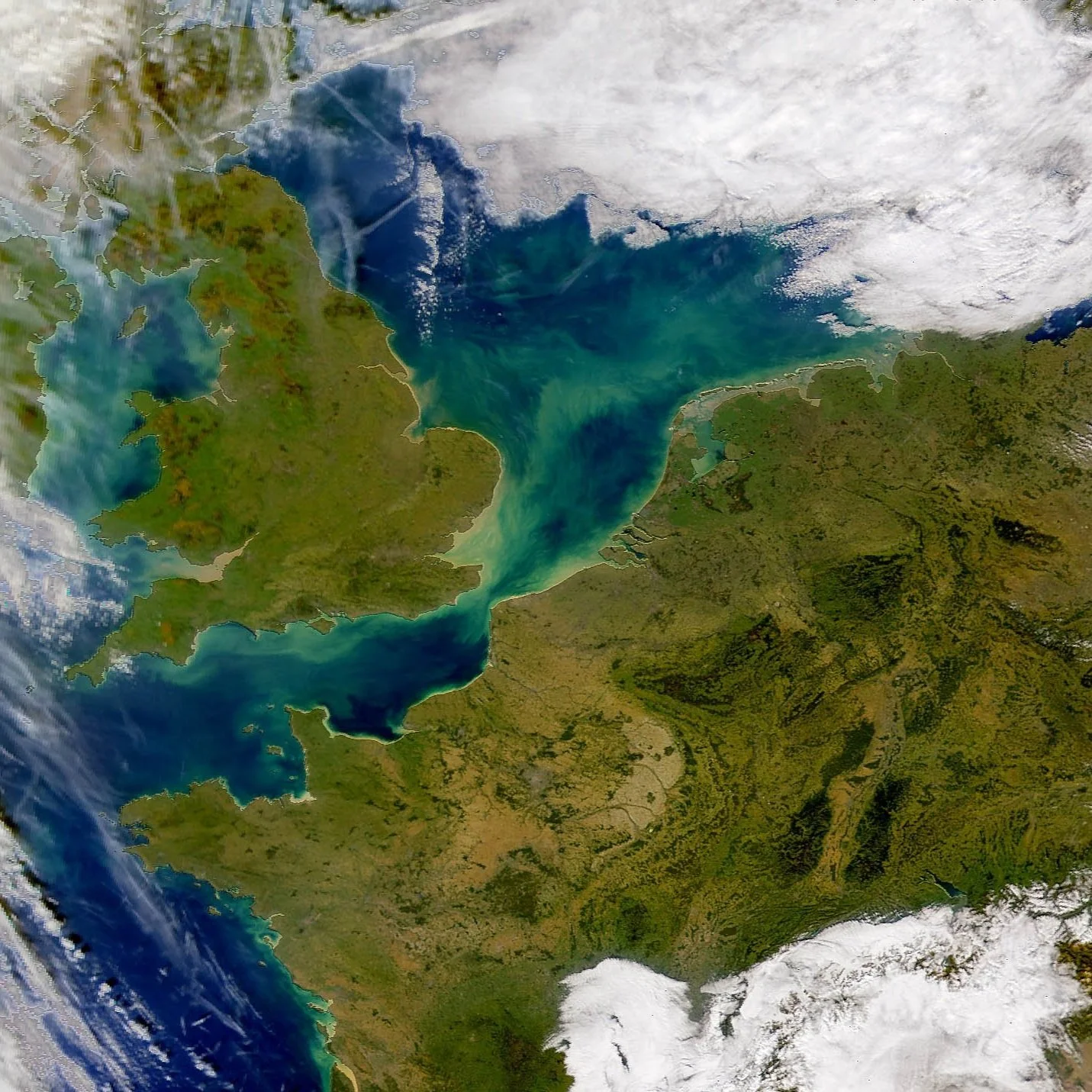The Cosmic Cycle of Dust
How dust has quietly shaped the universe for billions of years
Dust is everywhere, from the corners of our homes to the far reaches of outer space. Sometimes, as small as individual molecules, space dust is born from a star's death. But if enough of it clumps together, accretion disks can form, slowly birthing something new. Credit: NASA/Goddard Space Flight Center, the Advanced Visualization Laboratory at the National Center for Supercomputing Applications, A. Boley, A. Kritsuk and M. Norman
by Meghan Feldman
November 9, 2024
No matter how often and thoroughly you clean, dust always returns, like a fundamental truth of nature. Not even the vacuum of space itself is free from the nuisance. But the cosmic dust scattered throughout the universe, though unassuming, impacts everything from planets to stars, and possibly even life itself.
Credit: NASA/Space Telescope Science Institute
In some ways, cosmic dust shares similarities with household dust — it’s the bits left over. Household dust consists of shed skin cells, hair, lint, pollen, and other microscopic detritus, but cosmic dust consists of silicates, carbon, and other, more complex molecules formed in stars as byproducts of their fusion. While household dust particles can be as large as one hundred microns, cosmic dust peaks around a few microns — about the size of mitochondria, organelles that fuel cells — and can be as small as mere molecules.
Inside a star, cascades of nuclear reactions fuse hydrogen and helium into carbon, nitrogen, and oxygen in a process called nucleosynthesis. If a star is massive enough, it releases these molecules into the universe through an explosive supernova at the end of its life. Supernovae contain so much energy that additional fusion reactions occur during the explosion. The gas and dust released from these dying stars collect in dense clouds called nebulae. In the densest and coldest areas of these nebulae, gas shields the fragile dust particulates from high-energy stellar radiation that would otherwise obliterate them.
As small and as delicate as these cosmic dust particles are, they still create challenges for astronomers. Nebulae can become dense enough that they completely block visible light, forcing astronomers to observe in nonvisible wavelengths — those that can pierce the nebulae’s thick clouds — to detect hidden stars. Even when dust doesn’t completely obscure the starlight, it still dims it and can even change its color. Cosmic dust particles are the perfect size to scatter blue light while letting lower-frequency red wavelengths of light through, making stars behind nebulae look colder, older, and farther away. As a result, astronomers often need to correct their observations so that they don’t draw inaccurate conclusions from their data, but this requires a precise understanding of the amount of dust between Earth and the object in question.
When observing objects in distant galaxies, astronomers must account both for the interstellar dust within our home Milky Way galaxy as well as whatever dust there might be in the target galaxy. To complicate this further, cosmic dust isn’t distributed evenly. For example, if we were looking through our own Milky Way galaxy in different directions, we would see different amounts of dust; looking out perpendicular to the plane of the galaxy is like peering through light, downy snowfall. However, if we looked through the galaxy’s thick, spiral arms, it would be like squinting through a blizzard. In short, misunderstanding cosmic dust and its presence can easily lead to misunderstanding the placement of stars and galaxies scattered throughout the universe.
Nebulae are bright clouds of cosmic dust, elemental molecules, and plasma. They come in many different shapes and sizes. Pictured here from left to right and top to bottom: Twin Jet Nebula, Tarantula Nebula, NGC 2020 and NGC 2014, Bubble Nebula, Crab Nebula, Mystic Mountain, Orion Nebula, Butterfly Nebula, Cat's Eye Nebula.
Credit: NASA/ESA Hubble Space Telescope/Space Telescope Science Institute, edits by Rachel Lense for The Science Writer
Cosmic dust may be troublesome, hiding stars and tweaking astronomers’ data, but it also plays a crucial role in the formation of stars. The first stars formed when the densest pockets of gas in primordial nebulae collapsed due to their intense gravity. This generation of stars boiled into existence a mere 100 million years after the Big Bang — a little over 13 billion years ago. No other elements existed, so these stars were nothing more than great roiling masses of hydrogen and helium. As they burned and died, they forged new elements, enriching the universe with gas and dust, and creating the catalyst for the next generation of stars. Aleksandra Hamanowicz, Ph.D., a postdoctoral fellow at Space Telescope Science Institute, says, “That’s how the cycle of life in the galaxy goes. We need the dust and we need the gas for new stars to be born for the galaxy to be kept alive.” This cycle has continued for billions of years, generating the elements needed for complex chemistry and life itself.
Cosmic dust particles may even hold the key to the development of life on our planet. “We still don’t understand how we go from basic organic chemistry into life on planets, but that connection has something to do with the interstellar dust,” Hamanowicz explains. Just large enough for complex molecules to cling to, dust particles are often draped with ice, traces of methane, and laces of carbon-based molecules. Without these compounds and the dust that collects and protects them, the complex chemical reactions that create the building blocks of life wouldn’t be possible.
Planetary formation also relies on cosmic dust. Before a young protostar ignites into a star, dust particulates swirl around it in the surrounding nebula. Small crumbs of dust snowball into larger, rocky conglomerations, eventually accumulating into planets that orbit the newborn star. Once the star ignites, scorching ultraviolet radiation blasts away lone dust particulates, leaving the larger, rocky material behind. Without cosmic dust, terrestrial planets like Earth could not have formed.
Outer space is more than a vast emptiness dotted with celestial titans; dust swirls within the void, a testament to our universe’s past, holding memories of stars that have burnt out long before our own sun ignited. Dust is a universal constant of sorts, both in our homes and among the stars. And it’s a good thing it’s out there, as we likely owe our existence to it. If you find yourself outside on a dark, clear night, with the haze of our Milky Way galaxy arcing overhead, see if you can pick out the dark, starless patches where dust and gas might gather. In this galaxy and beyond, stars and planets are forming, and the cycle of dust continues.
Meghan Feldman
Meghan Feldman graduated from Whitman College with a bachelor’s degree in Physics and Astronomy and is a graduate student in the Johns Hopkins University M.A. in Science Writing program. When she’s not writing science facts, she’s climbing, gardening, and writing science fiction.
Senior Editor: William Kucinski
Art Editor: Rachel Lense
Copy Editor: Christopher Graber












